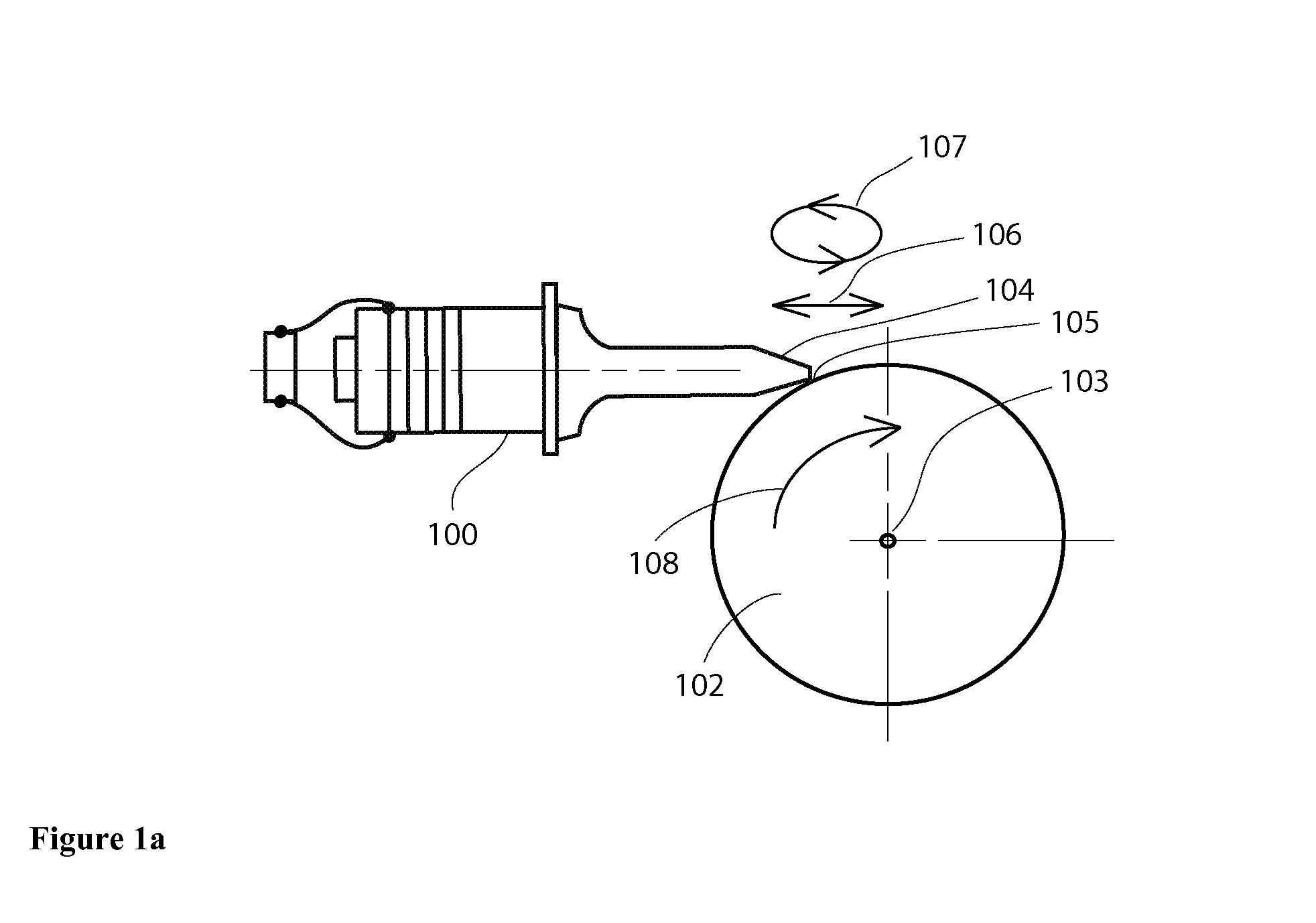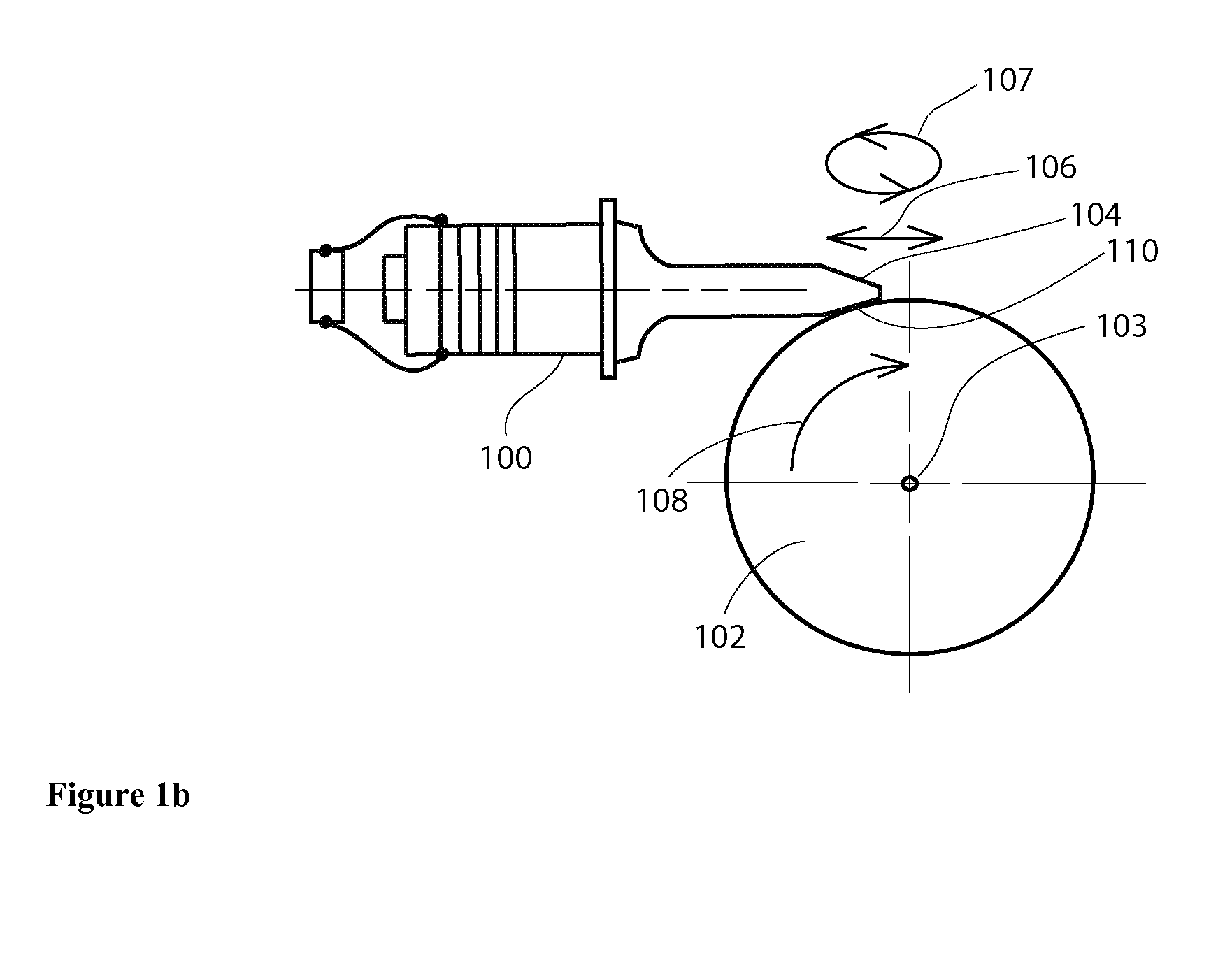Ultrasonically Powered Medical Devices and Systems, and Methods and Uses Thereof
a medical device and ultrasonic technology, applied in ultrasonic/sonic/infrasonic diagnostics, dental surgery, tomography, etc., can solve the problems of limited utility of current devices, and achieve the effects of reliable operation, less expensive to make and use, and increased patient safety
- Summary
- Abstract
- Description
- Claims
- Application Information
AI Technical Summary
Benefits of technology
Problems solved by technology
Method used
Image
Examples
example 1
[0100] An ultrasonic power system and ultrasonically powered device according to the present invention, configured to generate high force, linear output mechanical motion, as illustrated in FIG. 3, was constructed and tested as follows. A commercially available ultrasonic power generator operating at 55.5 kHz and rated for 75 watts maximum output power was connected to a commercially available plastic handpiece that contained an embedded ultrasonic transducer assembly. The embedded ultrasonic transducer assembly was designed to operate with said power generator such that during operation, longitudinal mechanical vibrations having an amplitude between 20 and 150 μm were produced at the distal tip of the transducer assembly, with increasing output power being user selectable by adjusting the output power selector switch between level 1 and level 5.
[0101] The handpiece was attached to a device body that was machined from Delrin™ plastic, into which was mounted an optional resonator, d...
example 2
[0109] An ultrasonic power system and ultrasonically powered device according to the present invention, configured to generate high speed rotary output mechanical motion was constructed and tested as follows. The device similar to that shown in FIG. 3 that was used in Example 1 was further modified by removing entirely the planetary gear assembly, output gear and linear rack. The drive shaft, onto which is fixedly mounted the primary gear, was extended through the device housing and supported by a bearing mounted in the wall of the device body. A coupler and drive shaft extension were used to lengthen the drive shaft, which then became the output shaft capable of rotary motion. Accordingly, when the driven wheel in frictional contact with the optional resonator was caused to rotate by energizing the transducer assembly, the rotary motion of the driven wheel was transferred directly through the drive gear mounted onto the same shaft as the driven wheel, to the primary gear mounted on...
example 3
[0114] A device capable of forward and reverse linear motion according to the method shown in FIG. 7d was constructed and tested as follows. The device used in Example 1 was modified by first forming a noticeable groove into the optional resonator component near its distal tip at the region of contact with the driven wheel. The groove was formed to have a similar shape profile, but slightly larger radius of curvature compared to that of the driven wheel. The device body was also modified to allow the position of the moveable carriage assembly pivot point to be carefully adjusted relative to the position of the optional resonator. With proper positioning of the moveable carriage assembly, the direction of the applied force, as well as the location within the optional resonator groove where contact takes place (i.e. the proximal vs. distal face of the groove), could be altered simply by adequately increasing the force generated by the spring on the moveable carriage assembly, for exam...
PUM
 Login to View More
Login to View More Abstract
Description
Claims
Application Information
 Login to View More
Login to View More - R&D
- Intellectual Property
- Life Sciences
- Materials
- Tech Scout
- Unparalleled Data Quality
- Higher Quality Content
- 60% Fewer Hallucinations
Browse by: Latest US Patents, China's latest patents, Technical Efficacy Thesaurus, Application Domain, Technology Topic, Popular Technical Reports.
© 2025 PatSnap. All rights reserved.Legal|Privacy policy|Modern Slavery Act Transparency Statement|Sitemap|About US| Contact US: help@patsnap.com



